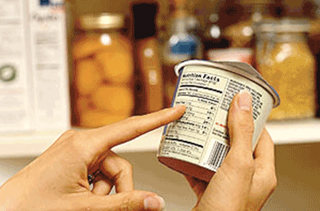The recommendations, published in the December issue of the Journal of Allergy and Clinical Immunology, are meant to be easily understood and implemented by clinicians in varied specialties, according to Matthew Fenton, PhD, of the NIAID's Division of Allergy, Immunology, and Transplantation in Bethesda, Md. Fenton was one of the primary authors and led the guidelines development project for NIAID.
"We were very specifically looking to generate a document that was not written by allergists for allergists," he said on a conference call with reporters.
Another primary author and a member of the guidelines coordinating committee, Hugh Sampson, MD, of the Mount Sinai School of Medicine in New York City, said during the conference call that he hopes the new guidelines will lead to a standardization of care -- which has been lacking in the management of food allergy.
The diagnosis of food allergy can be difficult because nonallergic food reactions are frequently confused with food allergies. There are also no treatments for food allergy, only management strategies that include avoiding allergens and dealing with symptoms.
Variations in the management of food allergies in different clinical settings provided the impetus for the creation of a comprehensive set of recommendations, according to Fenton.
To that end, NIAID worked with 34 professional organizations, advocacy groups, and federal agencies to convene a panel 25 experts that reviewed more than 400 studies in drafting the guidelines, which include 43 recommendations.
Diagnosis of food allergy is featured prominently in the guidelines because there is some confusion among clinicians between the concept of sensitization and clinical reactivity, Sampson said.
He said many physicians order blood tests looking for antibodies indicating sensitization to certain foods, and when such antibodies are found the physicians inform the patients to avoid those foods. Blood tests alone, however, are not diagnostic for food allergy, Sampson said, and many people with sensitivities to certain foods will not actually have a reaction upon exposure.
"The exercise of diagnosing a food allergy is not just doing a skin test, or not just doing a blood test, or not even just having a report of a food allergy," Sampson said. "It takes a combination of a good medical history as well as some laboratory tests and in some cases an oral food challenge in order to make the appropriate diagnosis."
In fact, the guidelines called for the use of medical history and physical examination to aid in the diagnosis of food allergy and to confirm patient-reported food allergy.
The recommendations also addressed the use of multiple types of tests for reaching a diagnosis for IgE-mediated food allergy:
- A skin prick test should be used to identify foods that may be provoking an allergic reaction, but it cannot stand alone for diagnosis. Intradermal testing and routine use of measuring total serum IgE should not be used to make a diagnosis.
- Allergen-specific IgE tests should be used to identify foods that could potentially provoke allergic reactions, but are not diagnostic of food allergy alone.
- An atopy patch test should not be used in routine evaluation of noncontact food allergy.
- A combination of skin prick tests, allergen-specific IgE tests, and atopy patch tests should not be used for routine diagnosis.
- Several nonstandardized and unproven procedures should not be used for diagnosis, including the allergen-specific IgG4 test used by some clinicians.
- Oral food challenges should be used for diagnosing food allergy. A double-blind, placebo-controlled food challenge is the gold standard, although a single-blind or open food challenge may be considered diagnostic in two cases: if either of these challenges elicits no symptoms, then food allergy can be ruled out. But when either type of food challenge elicits symptoms consistent with medical history and are supported by lab tests, then a diagnosis of food allergy is supported.
Comment: Although it can be time consuming, the best and easiest way to discern whether one is allergic to a particular food is to eliminate all known offending foods. Research has indicated the dairy, soy, gluten, corn and sugar are the reason behind most allergic reactions.
In terms of treatment, the guidelines noted that no drugs have been shown to prevent a reaction in patients with a food allergy. Allergen avoidance is the first-line treatment, and antihistamines are used for managing nonsevere food-induced allergic reactions.
Although recent studies of immunotherapy have yielded promising results, the guidelines stated that the evidence is not strong enough to recommend using allergen-specific immunotherapy to treat IgE-mediated food allergy.
Both Fenton and Sampson noted that there are still lingering safety concerns with such treatments.
The guidelines contain a comprehensive section on managing food-induced anaphylaxis. They recommend epinephrine as first-line therapy in all cases because other options -- including antihistamines and corticosteroids -- have a delayed onset of action. Even when there is a suboptimal response to epinephrine, additional doses of epinephrine should be given.
Fenton reported no conflicts of interest.
Numerous other members of the expert panel reported relationships with industry, in addition to other potential conflicts of interest.
All members of the coordinating committee and the expert panel were vetted for financial conflicts of interest by NIAID. Members of the expert panel were approved by the coordinating committee.




Reader Comments
to our Newsletter